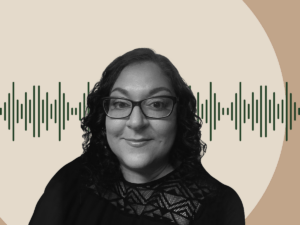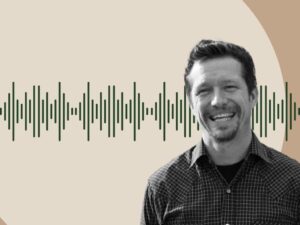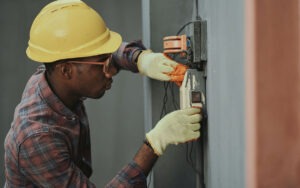
Across the United States, hundreds of cities have struggled after industrial decline. Some have seen their downtowns gutted. A few have experienced rapid gentrification as the towns have been rediscovered by tech companies, developers, and others.
But some cities follow another, more grassroots, community-based path. Such is the case for Lewiston and Auburn, twin cities on the Androscoggin River in Maine. Here, community organizations, economic development organizations, refugees, and long-time residents have come together to develop a new vision based in collaboration and cooperation.
Lewiston–Auburn is the second-largest metropolitan area in Maine, but with a metro population of fifty-nine thousand, it’s small. Lewiston—the focus here—is located (as is Auburn) in Androscoggin County, home to many farms and small businesses. In the late 1800s, textile mills were built along the Androscoggin River, and soon employed thousands of people, many of whom came to Maine from Quebec. This large Franco-American community faced intense discrimination, including by what had become a very large Ku Klux Klan chapter in Maine by the 1920s.
Over time, however, the Franco-American community became the majority in Lewiston, and French was commonly spoken on the streets of the bustling city. Lewiston thrived for decades, but textile mills, which once employed thousands of workers, started to decline in the 1950s.1 By the end of the twentieth century, the mills were gone, downtown was largely shuttered, and the population was falling.2
Enter a new wave of immigrants, this time from Somalia. The first arrivals came to Lewiston in the early 2000s—some directly from refugee camps in Kenya, while others first went elsewhere, such as Atlanta or Syracuse, but moved to Lewiston after hearing that it was a small, safe city with plenty of housing.
While some local residents welcomed the newcomers, the city government did not. In 2002, Mayor Laurier T. Raymond Jr. wrote an open letter to the Somalis of Lewiston, asking them to stop other Somalis from coming.3 Neo-Nazis from Illinois saw this as an opportunity to organize in Maine, and they planned an outreach meeting in Lewiston. But the mayor’s letter and the Neo-Nazis’ plans backfired, with only forty-five supporters showing up to the outreach meeting and over forty-five hundred people protesting the meeting or joining in a celebration of Lewiston’s new residents.4 During this time of division and conflict, new connections and collaborations started to grow and led to a blossoming of community-based development today.
In 2004, Lewiston proposed building a bypass through the center of the city, right through the poorest neighborhoods—an area referred to as the Tree Streets (because of the many streets named after types of trees).5 This would have effectively displaced 850 residents from their homes. While economic growth was promised, local residents were not convinced and organized The Visible Community (TVC), a grassroots movement that included many low-income elderly, disabled, and neighborhood residents. They opposed the city’s project and put forward their own vision. The result was the creation of The People’s Downtown Master Plan, released in 2008.6 The city’s bypass plan was defeated in summer of 2005, and The People’s Downtown Master Plan laid the seeds for projects and development over the course of the next decade.
Craig Saddlemire, then a recent graduate of Bates College, learned about community organizing from his time working with TVC and applied those skills to forming Lewiston’s first housing co-op, the Faire-Op, with three other friends, in 2008. After the co-op had been in operation for five years, it became apparent that a larger, more inclusive organization was needed to help expand the opportunity of cooperative housing to other community members.
Given that the Faire-Op was founded and led by young, white college graduates, it was clear that greater representation in leadership would be necessary for the project to successfully reach the communities seeking better housing. Joined by other community leaders, they formed the Raise-Op Housing Cooperative and developed a board that reflected the diversity of the neighborhood.7 Soon afterward, they bought a second building next to the original Faire-Op. They expanded again with a purchase of two more buildings, which brought their total to fifteen housing units and fifty residents.8
Today, residents and leaders of the Raise-Op include First Nations people and other long-time Mainers, as well as immigrants from Quebec, Djibouti, Congo, Angola, Somalia, Mexico, Brazil, and Europe. One of those buildings also became home to the Raise-Op’s office and to the Somali Bantu Community Association (SBCA).9 Saddlemire said, “We are creating affordable, inclusive, and democratic homes for our people. Through our organization, residents are also able to become more civically engaged, and many are leading neighborhood redevelopment projects, educating their neighbors about cooperative economics, and finding strength in collective action. We are bringing self-determination and community control back to the residents and, most importantly, treating housing as a human right to be protected, rather than a commodity to be exploited.”10
Since moving to Lewiston, the Somali community has been steadily developing businesses, farms, and organizations that are meeting community needs. In early 2002, Fatuma Hussein worked with community elders to form a small nonprofit, United Somali Women of Maine, to increase community engagement and provide services for the growing Somali population.11 Hussein increasingly became a spokesperson and connector for the community. This organization later became the Immigrant Resource Center as it expanded its mission and reach.12 A few years later, members of the Somali Bantu community—from Southern Somalia, and culturally distinct from the ethnic Somalis—started their own association (the Somali Bantu Community Association [SBCA]), and a youth soccer program that later became Maine Immigrant and Refugee Services (MEIRS).13
SBCA began by offering cultural programs to support its community. After hearing from community members that they wanted to access farmland, SBCA started a community farming program in 2012, which now supports two farms in Lewiston and Auburn, with over one hundred farmers, and is seeking to purchase permanent farmland for its farmers.
Other Somali refugees have started farm businesses, aided by an incubator farm program called the New American Sustainable Agriculture Project (NASAP).14 Originally a project of Coastal Enterprises, Inc. (also known as CEI)15—a statewide community development financial institution (CDFI)16—it later was adopted and operated by Portland, Maine-based Cultivating Community.17
Sign up for our free newsletters
Subscribe to NPQ's newsletters to have our top stories delivered directly to your inbox.
By signing up, you agree to our privacy policy and terms of use, and to receive messages from NPQ and our partners.
Dozens of predominantly Somali farmers gained access to land, training, and markets so that they could work as farmers, as many had in Somalia. MEIRS expanded its services to support youth, juvenile justice, citizenship programs, and English classes. Lisbon Street, once the bustling main street of Lewiston, had become largely shuttered in the 1980s and ’90s. Somali refugees saw opportunities in these low-rent storefronts, and soon opened halal markets, cafés, and clothing stores that met community needs and breathed new life into this neighborhood.
In 2013, the St. Mary’s Nutrition Center and Bates College’s Harward Center began a community food assessment, which sought to better understand food insecurity and the food economy in Lewiston.18 The report’s recommendations led to the formation of the Good Food Council of Lewiston-Auburn (GFCLA), which advanced a vision of a sustainable food system.19 In 2016, GFCLA launched the L-A Community Food Charter—which both Lewiston and Auburn city governments, as well as 270 individuals and organizations, signed on to—to affirm their right to good food.20
The Cooperative Development Institute (CDI), a nonprofit that specializes in helping start new co-ops, came to Lewiston in 2015 to assist a group of Somali Bantu farmers graduating from NASAP and exploring ways to farm together on their own piece of land.21 Subsequently, these farmers formed the first immigrant-owned co-op in Maine, New Roots Cooperative Farm (New Roots).22 They worked collaboratively with Maine Farmland Trust, Land for Good, and Cultivating Community to acquire a thirty-acre farm, with a lease-to-own arrangement, on the northern edge of Lewiston.23
At their groundbreaking celebration, in 2016, over one hundred people—including Somali immigrants, long-time Mainers, nonprofit staff and organizers, and Lewiston’s then-mayor Robert E. McDonald and other elected officials—came together to celebrate this landmark achievement. CDI and Cultivating Community worked with New Roots to raise over $55,000 in grants (from private foundations and the U.S. Department of Agriculture [USDA]), donations, and crowdsourced funding, and $45,000 in Sharia-compliant financing from the Cooperative Fund of New England, another regional CDFI, Slow Money Maine, and a community member. “Our aim is not only to grow food and run a business ourselves but to help our community and teach them about how to run a business,” said New Roots farmer Batula Ismail.24
The Healthy Neighborhoods Coalition started in 2013, as community members came together to focus on the health of the Lewiston–Auburn urban core, to strengthen relationships between mainstream organizations and immigrant groups, and to include community members and groups not usually included in planning.25 What started as a grassroots effort has grown in the past few years, with a partnership with the City of Lewiston and significant funding from the John T. Gorman Foundation, and a $1.3 million HUD Choice Neighborhoods Planning Grant.26
The Healthy Neighborhoods Coalition has organized through deep community engagement, working with residents and organizations, to develop a Transformation Plan for the Tree Streets neighborhood.27 That plan is now providing the basis for a HUD Choice Neighborhoods Implementation Grant to assist the coalition in renovating and building new affordable housing in the neighborhood (including more cooperative housing), improving conditions for neighborhood businesses, and improving existing green spaces and creating new green spaces in the neighborhood.28
New Roots and Raise-Op have inspired many in the Lewiston–Auburn community. Recently, CDI applied for and was awarded a Rural Community Development Grant from the USDA for $215,000 over two years, to train more nonprofit, community-based organizations in co-op development.29
Six different groups, including Somali-led organizations and coalition members, have participated in the training program—coordinated by CDI and the Democracy at Work Institute (DAWI), a national nonprofit30—where they learn how to develop co-op structures, business plans, and culture.
So far, six co-op projects have emerged. These include a temporary-labor worker co-op, two child-care co-ops, a bike-powered compost-hauling co-op, an herbal medicine co-op, and a reenvisioned food co-op and food hub.31 In addition to the training, co-ops are connected to an ecosystem of support, including funding, financing, and additional technical assistance. CDI has also worked with Somali Bantu community members and the Sustainable Livelihoods Relief Organization32—a Somali-led organization—to form Isuken Co-op, a worker-owned food truck serving farm-to-table food.33
These projects have also reached mainstream economic groups, including the local chamber of commerce and Lewiston’s Economic & Community Development Department, which have helped organize a three-part series of workshops (attended by over fifty area businesses) on exit planning—including the option of exiting through transferring ownership to worker cooperatives.34
These same partners came together this spring in a meeting cohosted on April 4, 2019, by the Cooperative Development Institute, the Lewiston Auburn Metropolitan Chamber of Commerce, and Kristen Cloutier, current mayor of Lewiston, to explore ways to increase collaboration. Mayor Cloutier opened by saying, “We can do more together than on our own…. If we want to address the growing issue of economic inequality in this country and in the great state of Maine, it is crucial that we support a democratically owned and just economy where everyone can fulfill their needs and aspirations.”35
At the meeting, Melissa Hoover, executive director of DAWI, shared approaches used in other regions. For example, in Western North Carolina, the Carolina Textile District has taken a multistakeholder approach to revitalizing the textile industry, using co-ops as one means to secure local ownership.
Meanwhile, in Lewiston, the former mill town is on the rise. Getting there has required many partners, with collaboration grounded in strong values, participatory processes, and cooperative ownership.
Notes
- Legacy Lewiston: City of Lewiston Comprehensive Plan (Lewiston, ME, July 2014); and “Lewiston, Maine,” Wikipedia, accessed August 28, 2019.
- “Lewiston, Maine,” Wikipedia.
- Andrew Cullen, “A decade later: The city, Somalis and spending,” Sun Journal, December 18, 2011.
- “4,500 People Rally in Support [of] the Somali Community of Lewiston, Maine Against Neo-Nazi Rally,” Democracy Now!, January 13, 2003.
- Katherine Takai, with special thanks to Cory Fleming, “Advancing Social Equity in Lewiston, Maine,” in Local Governments, Social Equity, and Sustainable Communities: Advancing Social Equity Goals to Achieve Sustainability, Case Study Series (Washington, DC: U.S. Department of Housing and Urban Development, 2014); and The People’s Downtown Master Plan: A project of the Visible Community (Lewiston, ME: Presbyterian Committee on the Self-Development of People, Spring 2008).
- The People’s Downtown Master Plan.
- “Meet the Board of Directors,” Raise-Op Housing Cooperative, accessed August 22, 2019.
- “About Us,” Raise-Op Housing Cooperative, accessed August 22, 2019.
- Somali Bantu Community Association, Lewiston, Maine, accessed August 22, 2019.
- Craig Saddlemire, interview with the author, August 1, 2019.
- “Immigrant Resource Center of Maine Story,” Immigrant Resource Center of Maine, accessed August 22, 2019.
- Ibid.
- “Building New Lives in Maine,” Maine Immigrant & Refugee Services, accessed August 22, 2019.
- “Case Study 3: Lewiston New American Sustainable Agriculture Project (NASAP),” Cultivating New Americans: Refugee Garden & Farm Projects, accessed August 22, 2019.
- “We are building an economy that works for everyone,” Coastal Enterprises, (CEI), accessed August 22, 2019; and see Betsy Biemann and Keith Bisson, “How to Grow a Local Nonprofit Mission to Scale: 6 Points of Practice,” Nonprofit Quarterly, October 16, 2018.
- For more on CDFIs, see https://nonprofitquarterly.org/tag/community-development-financial-institution/.
- “We Believe in Food Justice for All,” Cultivating Community, accessed August 22, 2019.
- Community Food Assessment, Lewiston, Maine 2013 (Lewiston, ME: Good Food Council of Lewiston-Auburn, 2013).
- Good Food Council of Lewiston-Auburn (GFCLA), accessed August 22, 2019.
- “L-A Community Food Charter,” Good Food Council of Lewiston-Auburn, accessed August 22, 2019.
- “Cooperative Food Systems,” Cooperative Development Institute, accessed August 23, 2019.
- New Roots Cooperative Farm, accessed August 22, 2019.
- “Maine Farmland Trust (MFT) was founded by a group of farmers and farm advocates in 1999 to help protect farmland,” Maine Farmland Trust, accessed August 22, 2019; and “History,” Land For Good, accessed August 22, 2019.
- Batula Ismail, interview with the author, August 20, 2016.
- “Healthy Neighborhoods releases philosophy on property taxes for new development,” Growing Our Tree Streets, accessed August 22, 2019.
- “Lewiston’s Tree Street Initiative,” John T. Gorman Foundation, June 8, 2019, accessed August 23, 2019.
- “The Growing Our Tree Streets Draft Transformation Plan is now available!,” Growing Our Tree Streets, accessed August 22, 2019.
- Ibid.
- Steve Dubb, “Coalition Launches Rural Employee Ownership Transition Initiative in Maine,” Nonprofit Quarterly, November 2, 2018.
- “Building better jobs and a fairer economy with worker cooperatives,” Democracy at Work Institute, US Federation of Worker Cooperatives, accessed August 23, 2019.
- Links to these projects are not yet available.
- Sustainable Livelihoods Relief Organization (SLRO), accessed August 23, 2019.
- “About Us,” Isuken Co-Op, accessed August 23, 2019.
- “L-A Metro Chamber offers three-workshop series on business exit, retirement,” Turner Publishing Incorporated, January 12, 2019.
- Quote obtained by the author during the meeting.










